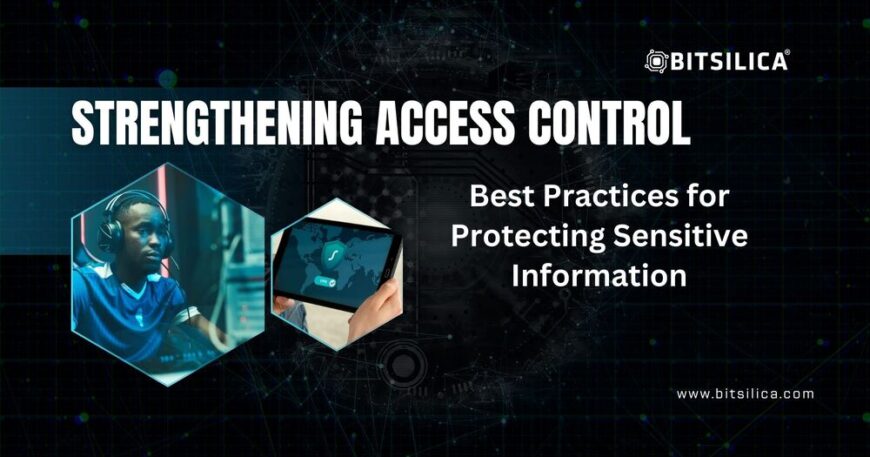Strengthening Access Control: Best Practices for Protecting Sensitive Information
Introduction
Access control is a fundamental aspect of cyber security, ensuring that only authorized individuals can access specific data and systems. Effective access control measures protect sensitive information from unauthorized access, reducing the risk of data breaches and other security incidents. This blog post will explore best practices for implementing robust access control, with real-world examples to illustrate their importance.
Understanding Access Control
Access control is the process of granting or denying specific requests to obtain and use information and related information processing services. It includes both physical and digital access controls.
Key Components of Access Control:
• Identification: Determining the identity of the user requesting access.
• Authentication: Verifying the identity of the user.
• Authorization: Granting or denying access based on the user’s identity and permissions.
• Accountability: Ensuring that actions taken by users can be traced back to their identity.
Example: In 2018, a major social media platform experienced a data breach due to weak access controls, allowing unauthorized users to access sensitive user data. This incident highlighted the importance of robust access control measures.
Implementing Role-Based Access Control (RBAC)
Role-Based Access Control (RBAC) assigns access permissions based on users’ roles within the organization, ensuring that individuals only have access to the information necessary for their job functions.
Best Practices:
• Define Roles and Permissions: Clearly define roles and associated permissions based on job responsibilities.
• Least Privilege Principle: Grant users the minimum level of access necessary to perform their duties.
• Regular Reviews: Conduct regular reviews of roles and permissions to ensure they remain appropriate and up to date.
Example: A financial institution implemented RBAC, reducing the risk of unauthorized access and ensuring that employees only had access to the data needed for their specific roles.
Using Multi-Factor Authentication (MFA)
Multi-Factor Authentication (MFA) adds an extra layer of security by requiring users to provide two or more forms of verification before gaining access.
Best Practices:
• Enable MFA for Critical Systems: Require MFA for accessing sensitive data and critical systems.
• Use Secure Authentication Methods: Prefer authentication apps and hardware tokens over SMS-based methods for better security.
• Educate Users: Train users on the importance of MFA and how to use it effectively.
Example: A healthcare provider implemented MFA for accessing patient records, significantly reducing unauthorized access incidents.
Implementing Attribute-Based Access Control (ABAC)
Attribute-Based Access Control (ABAC) considers user attributes, environmental conditions, and resource attributes to determine access permissions dynamically.
Best Practices:
• Define Attribute Policies: Create policies that specify which attributes are required for accessing specific resources.
• Use Contextual Information: Incorporate contextual information, such as location and time, into access control decisions.
• Regular Policy Updates: Update attribute policies regularly to reflect changes in the organization and its environment.
Example: A tech company used ABAC to grant access to development servers based on user roles, location, and time of day, enhancing security and flexibility.
Securing Physical Access
Physical access control measures protect against unauthorized physical access to facilities, equipment, and data storage locations.
Best Practices:
• ID Badges and Access Cards: Issue ID badges and access cards to employees and require them to be displayed at all times.
• Biometric Systems: Use biometric authentication methods, such as fingerprint or iris scanners, for secure areas.
• Visitor Management: Implement a visitor management system to track and control access for non-employees.
Example: A government agency reduced physical security breaches by implementing biometric access control systems for sensitive areas.
Monitoring and Auditing Access
Regular monitoring and auditing of access control activities help detect and respond to unauthorized access attempts and policy violations.
Best Practices:
• Access Logs: Maintain detailed logs of access control activities, including successful and failed access attempts.
• Regular Audits: Conduct regular audits of access logs and permissions to identify and address any discrepancies or suspicious activities.
• Real-Time Alerts: Use real-time alerts to notify security teams of potential access control violations.
Example: A retail company detected and prevented multiple unauthorized access attempts by regularly auditing access logs and implementing real-time alerting.
Implementing Access Control Policies
Access control policies provide a framework for managing and enforcing access control measures within the organization.
Best Practices:
• Clear Policies: Develop clear access control policies that outline roles, responsibilities, and procedures for granting and revoking access.
• Employee Training: Train employees on access control policies and their importance in protecting sensitive information.
• Policy Enforcement: Ensure that access control policies are enforced consistently across the organization.
Example: An insurance company improved its access control by developing comprehensive policies and conducting regular training sessions for employees.
Using Access Control Tools and Technologies
Leveraging access control tools and technologies can enhance the effectiveness and efficiency of access control measures.
Best Practices:
• Identity and Access Management (IAM) Systems: Use IAM systems to manage user identities and access permissions centrally.
• Access Control Lists (ACLs): Implement ACLs to specify which users or groups can access specific resources.
• Privileged Access Management (PAM): Use PAM solutions to manage and monitor privileged accounts with elevated permissions.
Example: A large corporation used an IAM system to streamline access management, reducing administrative overhead and improving security.
Conclusion
Effective access control is essential for protecting sensitive information and preventing unauthorized access. By implementing RBAC and ABAC, using MFA, securing physical access, monitoring and auditing access activities, developing clear policies, and leveraging access control tools and technologies, organizations can significantly enhance their access control measures. Stay vigilant and proactive in managing access control to safeguard against evolving cyber threats.





